
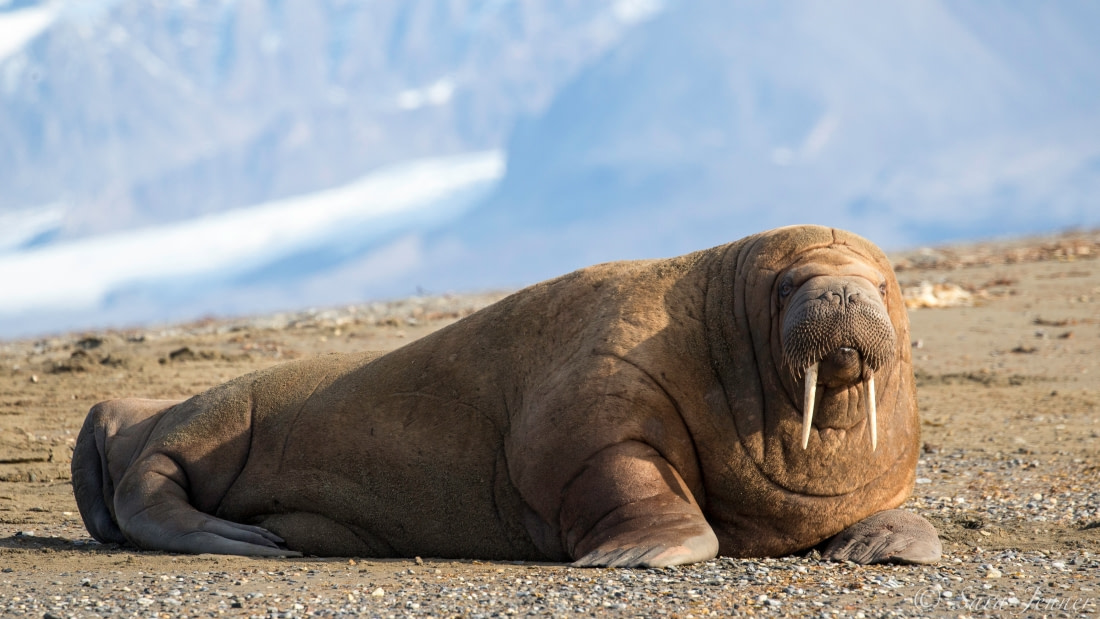
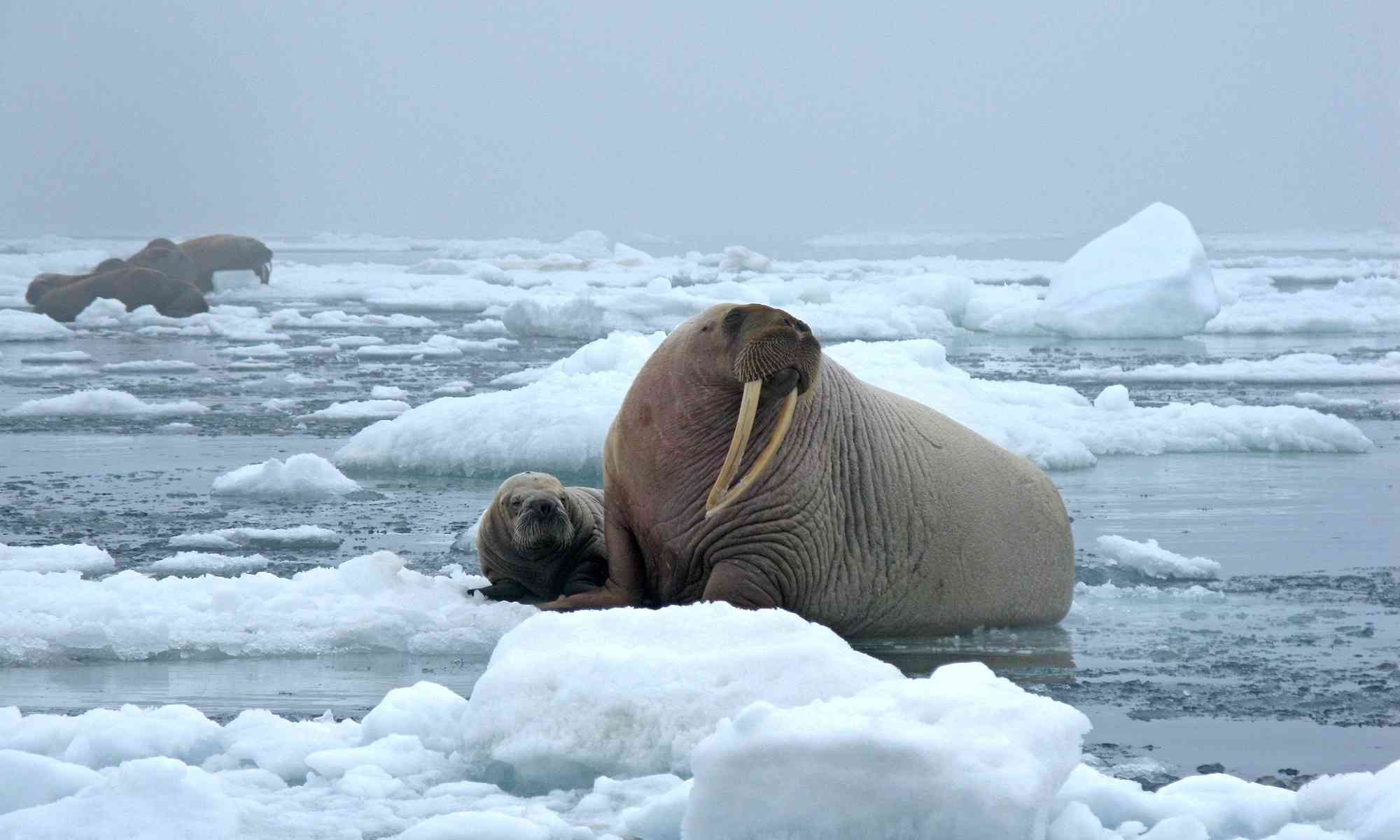
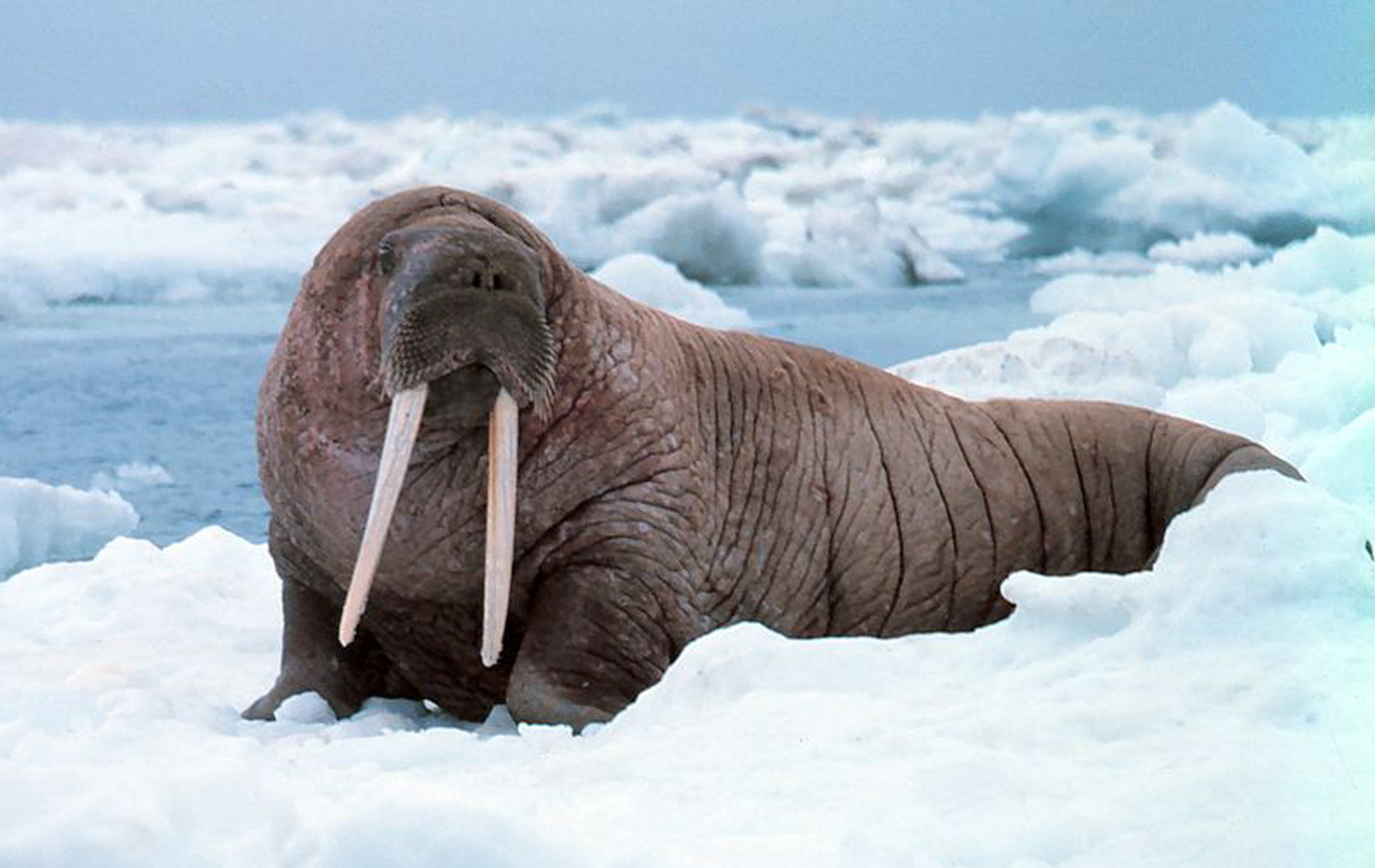


 Walruses live in Arctic and sub-Arctic regions of the world near the North Pole. They can be found in the Pacific Ocean, Atlantic Ocean, and Arctic Ocean. |
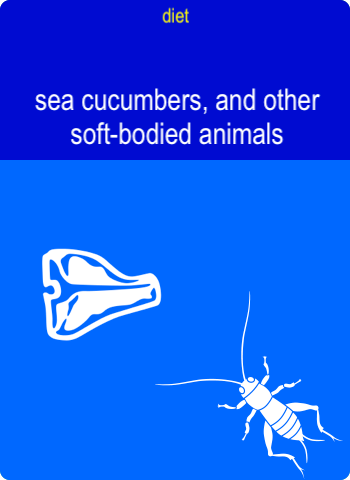 Walruses prefer molluscs - mainly bivalves such as clams. They also eat many other kinds of benthic invertebrates including worms, gastropods, cephalopods, crustaceans, sea cucumbers, and other soft-bodied animals. |
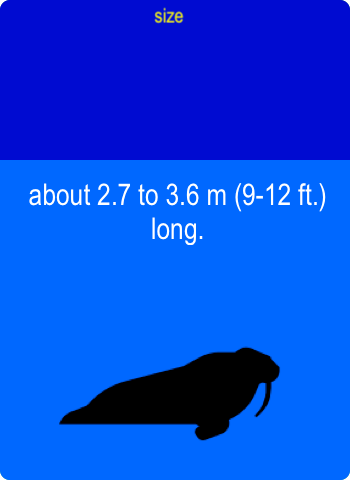
|
These blubbery marine mammals can really pack on the pounds! Adult male walrus can weigh upwards of 4,400 lbs. and measure over 11 ft. long. One exceptionally large specimen was 16 ft. long and approximately 5,000 lbs. or more! This species primary distinguishing characteristic, their long tusks, can measure over 3 ft. long. Nearby, sprouting from the lips, is a thick, bushy mass of whiskers. These whiskers, called vibrissae, help the them feel for prey in murky waters.
Surprisingly, these tusks are no more than very long teeth! The canine teeth of a walrus grow much longer and larger than the vast majority of other animals, creating the tusks you see protruding from the mouth. Narwhal tusks are also extended The tusks of a walrus actually have a very important function. Everyone knows that it is extremely difficult to climb out of water onto ice, which is why thin ice is so dangerous if you fall in.
Walruses live in a frigid and unforgiving Arctic wilderness. Their habitats must be shallow, as they feed along the sea floor and cannot dive to exceptional depths like some other pinnipeds. These marine mammals live in shallow seas and haul out on nearby ice floes to rest. Because they have limited habitats that they can occupy, they will often congregate in large numbers to take advantage of preferred areas.